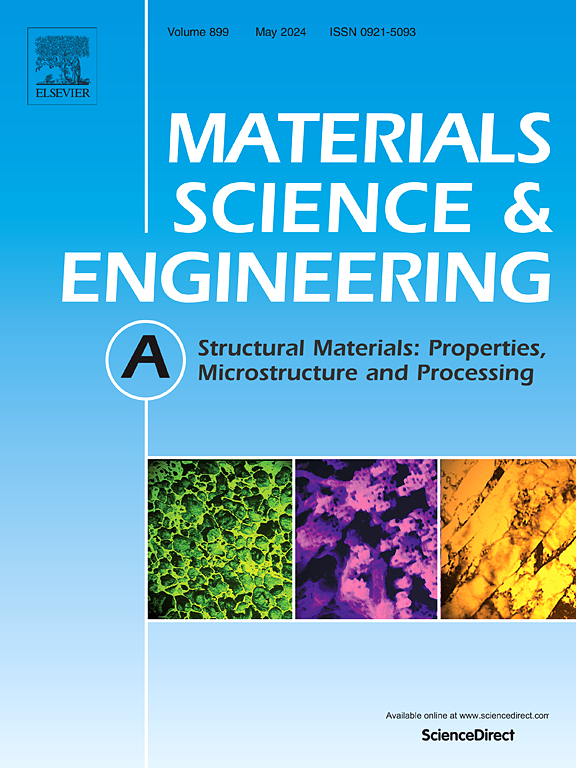Additive manufacturing process related mechanical performance of cobalt-chromium-molybdenum alloy: In-situ X-ray computed tomography study
IF 6.1
2区 材料科学
Q1 MATERIALS SCIENCE, MULTIDISCIPLINARY
引用次数: 0
Abstract
Laser powder bed fusion (PBF-LB) shows significant potential in additively manufacturing personalized CoCrMo alloy orthopedic implants. However, the characteristics of microstructures and defects, and especially their influence on the mechanical performance of PBF-LB processed CoCrMo alloy remain underexplored. Here, CoCrMo alloy is additively manufactured, and we first employ an in-situ X-ray computed tomography (XCT) tensile test to investigate the exclusive microstructures and defects and their influence mechanism on mechanical properties. Adequate laser energy density (Ev = 106.67–152.38 J/mm3) reduces defect number and increases sphericity, improving manufacturing quality, while insufficient or excessive energy input leads to LOF or keyhole defects, respectively. Besides, by first conducting the in-situ XCT tensile tests, we originally 3D visually reveal that the underlying failure mechanism is the defect growth and coalescence, which lead to the crack initiation and eventual brittle fracture. At Ev = 152.38 J/mm3, the alloy exhibits the best mechanical performance (tensile strength: 1193.41 MPa, elongation: 4.99 %), with fracture behavior governed by intrinsic microstructural characteristics. The PBF-LB processed CoCrMo alloy exhibits even higher ultimate strength and comparable elongation than the conventionally casted ones. Moreover, the heat treatment enables the recrystallization and precipitate formation, significantly improving the elongation of the PBF-LB processed CoCrMo alloy to 26.65 % at Ev = 266.67 J/mm3, achieving a marvelous balance between strength and ductility. This study fills the gap in understanding the relationship between additive manufacturing, defect formation, and mechanical performance of CoCrMo alloy, establishing a basis for efficient manufacturing and superb mechanical performance for its biomedical applications.
增材制造工艺对钴铬钼合金力学性能的影响:原位x射线计算机断层扫描研究
激光粉末床熔融(PBF-LB)在增材制造个性化CoCrMo合金骨科植入物方面显示出巨大的潜力。然而,对于PBF-LB加工的CoCrMo合金的显微组织和缺陷特征,尤其是它们对力学性能的影响还有待进一步研究。本研究采用增材制造CoCrMo合金,并首先采用原位x射线计算机断层扫描(XCT)拉伸试验来研究其特有的显微组织和缺陷及其对力学性能的影响机制。适当的激光能量密度(Ev = 106.67 ~ 152.38 J/mm3)可以减少缺陷数量,增加球形度,提高制造质量,而能量输入不足或过多会导致LOF缺陷或keyhole缺陷。此外,通过原位XCT拉伸试验,我们最初3D直观地揭示了潜在的破坏机制是缺陷的生长和合并,从而导致裂纹萌生和最终的脆性断裂。在Ev = 152.38 J/mm3时,合金力学性能最佳,抗拉强度为1193.41 MPa,伸长率为4.99%,断裂行为受微观组织特征控制。PBF-LB处理的CoCrMo合金比传统铸造的合金具有更高的极限强度和相当的延伸率。此外,热处理促进了再结晶和析出相的形成,显著提高了PBF-LB处理的CoCrMo合金的伸长率,在Ev = 266.67 J/mm3时达到26.65%,实现了强度和塑性的良好平衡。本研究填补了人们对CoCrMo合金增材制造、缺陷形成与力学性能之间关系的认识空白,为其在生物医学领域的高效制造和卓越力学性能奠定了基础。
本文章由计算机程序翻译,如有差异,请以英文原文为准。
求助全文
约1分钟内获得全文
求助全文
来源期刊

Materials Science and Engineering: A
工程技术-材料科学:综合
CiteScore
11.50
自引率
15.60%
发文量
1811
审稿时长
31 days
期刊介绍:
Materials Science and Engineering A provides an international medium for the publication of theoretical and experimental studies related to the load-bearing capacity of materials as influenced by their basic properties, processing history, microstructure and operating environment. Appropriate submissions to Materials Science and Engineering A should include scientific and/or engineering factors which affect the microstructure - strength relationships of materials and report the changes to mechanical behavior.
 求助内容:
求助内容: 应助结果提醒方式:
应助结果提醒方式:


